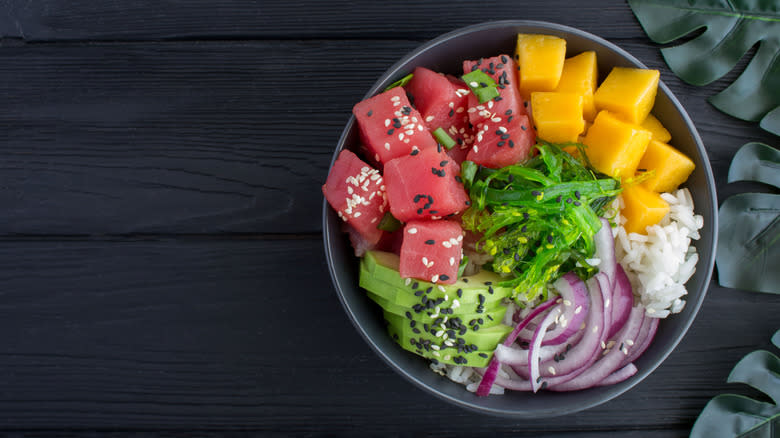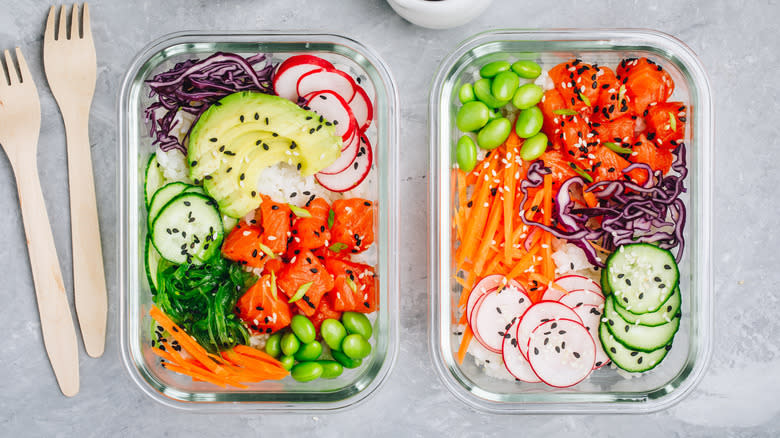The Best Way To Store Leftover Poke And Keep It Fresh

Although it originated in Hawaii, these days, you can find poke in restaurants and grocery stores all over the US — it was even named the most popular delivery food by Grubhub in 2017. Poke, which means "cut into chunks" in Hawaiian, typically includes bite-sized cubes or slices of raw fish (such as ahi tuna, salmon, red snapper, octopus, and more) that are often marinated and served with rice, seaweed, vegetables, and other toppings.
Since poke usually includes raw fish, it's best to consume it on the same day of purchase or preparation. Stored properly, poke can last in the fridge for up to two days. To maximize that limited timeframe, it's important to store your poke properly, which is to use an airtight container and to store the container in the coldest part of your refrigerator — don't store poke in the refrigerator door, as that's subject to temperature fluctuations every time the door is opened, and make sure your refrigerator is set to below 40 degrees Fahrenheit. If you purchased your poke ready-to-eat from the store, you should also factor in the time that it has already spent in a refrigerator. Do not let your poke sit out at room temperature for more than 2 hours (or 1 hour when it's more than 90 degrees Fahrenheit out), warns the USDA.
Read more: 15 Different Ways To Cook Fish
How To Further Extend The Shelf Life Of Poke

To further extend the shelf life of your poke, you have two options. One is to cook the raw fish, which will then be good in the refrigerator for four days. The other option is to freeze it in a freezer-safe bag or container, which will then be good in the freezer for up to three months.
It's also important to know the signs of spoilage when it comes to poke, which include changes in smell, appearance, and texture. If the fish in your poke smells especially "fishy, sour, or ammonia like," then chances are, it has spoiled, according to the FDA, and should be thrown out. If the color of the fish has changed or gotten dull, or if it develops a slimy texture or oozes any kind of a slimy substance, then you should also throw the poke out rather than risk food poisoning. Symptoms of food poisoning from eating bad poke can include stomach cramps, vomiting, and diarrhea. If you're in any doubt about whether your poke is still good, it's best to throw it out rather than risk getting sick.
Read the original article on Tasting Table.

 Yahoo News
Yahoo News 
